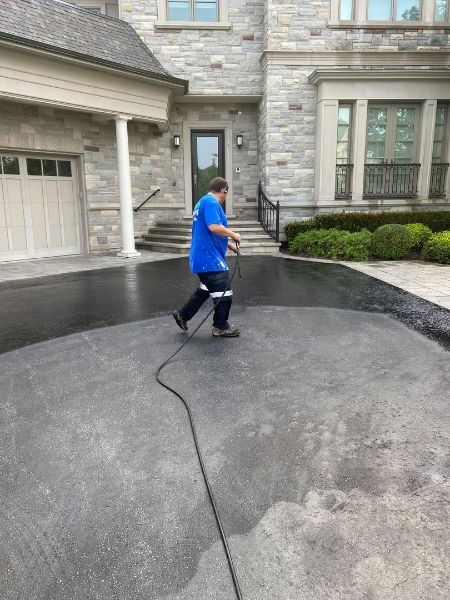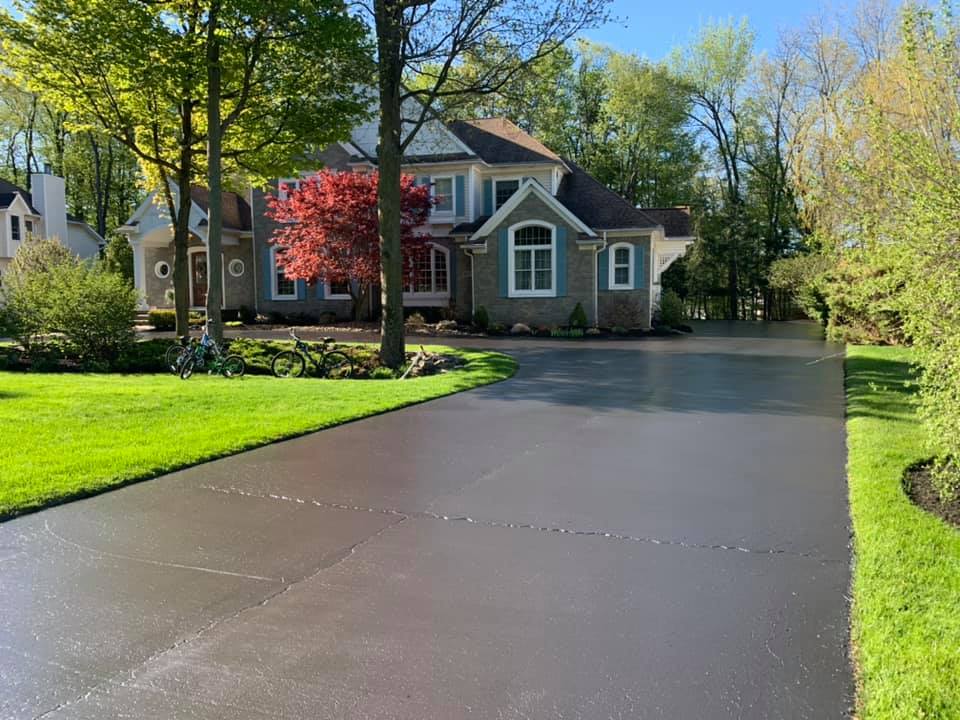Master Angle Parking: Enhancing Asphalt Sealing Strategies
Master Angle Parking: Enhancing Asphalt Sealing Strategies
Blog Article
Exactly How to Use Cold Mix Asphalt for Sustainable and sturdy Roads
In the world of roadway building, the usage of cool mix asphalt stands as a method that holds assurance for resilience and sustainability. By delving into the subtleties of chilly mix asphalt past the surface, a much deeper understanding arises of how this relatively easy material can lead the means for roads that endure the test of time.
Benefits of Cold Mix Asphalt
Cold mix asphalt offers resilient and cost-effective solutions for road building and construction jobs. Among the main advantages of cool mix asphalt is its versatility. Unlike warm mix asphalt, cool mix asphalt can be used in different weather and appropriates for both short-lived repair work and permanent applications. This flexibility makes it a useful alternative for upkeep jobs and emergency situation repair work.
Another advantage of cold mix asphalt is its convenience of application. Because it can be stocked for extended periods without setting, it streamlines the logistics of roadway building jobs. Additionally, cold mix asphalt does not require specific equipment for laying and blending, minimizing total task costs and making it accessible for small-scale projects in remote areas.
Furthermore, cold mix asphalt is eco pleasant. Its production process consumes much less power contrasted to hot mix asphalt, causing reduced carbon discharges. Using cold mix asphalt also minimizes the demand for regular repair services, leading to less waste and reduced product intake over the lifespan of the roadway.
Prep Work and Blending Refine
To accomplish optimal performance and uniformity in road building and construction making use of chilly mix asphalt, careful attention to the prep work and mixing process is crucial. The prep work phase entails making sure that the accumulated materials are clean, completely dry, and without any kind of pollutants that might influence the quality of the mix. It is critical to properly determine and percentage the accumulations and bitumen to accomplish the desired mix style.
The mixing process is a critical action that substantially affects the last quality of the cool mix asphalt. Appropriate mixing ensures that the accumulations are consistently covered with the bitumen binder, causing an uniform combination that uses excellent workability and longevity. The mixing tools utilized should be capable of extensively blending the products together without causing extreme home heating that can compromise the properties of the mix.
Application Methods for Roadways
Accomplishing optimum roadway construction using cold mix asphalt needs precise application strategies that guarantee consistent protection and lasting longevity. When using the cold mix asphalt, making use of the right tools such as a paver can assist achieve consistent thickness and thickness. It is crucial to follow supplier specs relating to layer thickness and compaction needs to assure the durability and performance of the learn this here now chilly mix asphalt road.
Upkeep Tips for Durability
For optimum durability of roads constructed with chilly mix asphalt, executing proactive upkeep methods is important. Normal inspection of the road surface area is vital to determine any signs of wear and tear, such as fractures or pockets, which should be resolved immediately to avoid further deterioration. One reliable upkeep suggestion is to carry out regular patching and sealing of any damaged locations to stop water seepage and maintain the structural stability of the sidewalk.
Along with responsive maintenance procedures, it is crucial to do preventive upkeep to extend the lifespan of chilly mix asphalt roadways. This includes routine sweeping to get rid of debris and prevent it from building up and triggering damages to the surface area. Additionally, applying a safety sealer or rejuvenator can help boost the toughness of the asphalt mix and boost resistance to environmental factors such as UV rays and oxidation.
Environmental Impact and Sustainability
Cold mix asphalt supplies a number of environmental benefits compared to warm mix asphalt, mostly due to its reduced manufacturing temperature level. Additionally, chilly mix asphalt can be generated utilizing recycled products, even more reducing its environmental influence by reducing the demand for virgin accumulations and lowering waste sent out to garbage dumps.
In terms of sustainability, the use of chilly mix asphalt can contribute to longer-lasting roads, decreasing the frequency of fixings and resurfacing. Overall, cold mix asphalt supplies a long lasting and eco-friendly service for structure and keeping roadways with a reduced ecological impact.

Verdict
Finally, utilizing chilly mix asphalt for roadways uses various advantages such as resilience, sustainability, and lower environmental effect. By adhering to proper preparation, blending, application, and upkeep strategies, roads can be created to last longer and call for much less power intake and greenhouse gas emissions. Implementing cool mix asphalt in roadway construction projects is a eco-friendly and affordable solution for developing long lasting and sustainable facilities.
Unlike hot mix asphalt, cold mix asphalt can be made use of in various weather conditions and is suitable for both irreversible applications and short-lived repair services - asphalt view publisher site repair. In addition, chilly mix asphalt does not call for specialized equipment for mixing and laying, decreasing total task prices and making it accessible for small-scale tasks in remote locations

Report this page